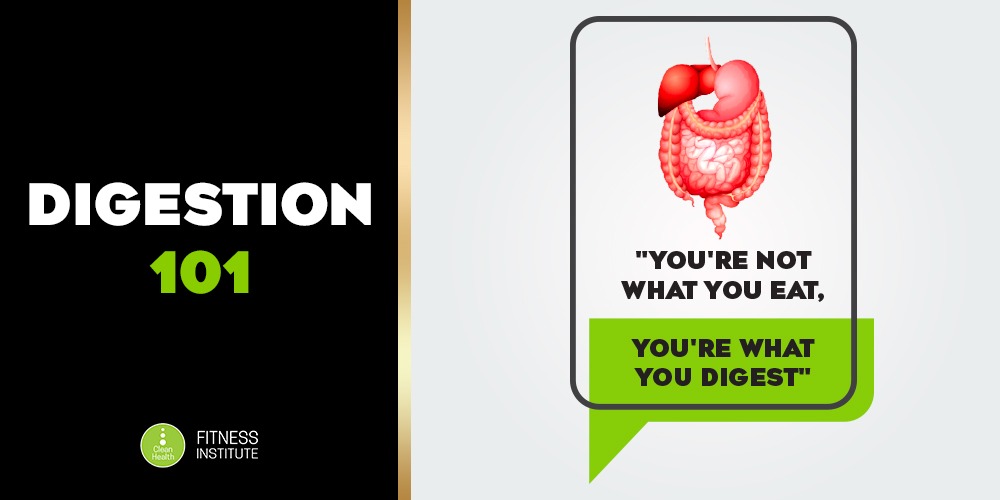
Written by Online Clean Health Master Coach Kim Leggett
Nutrition is often the ‘make or break’ factor in whether or not a client achieves their desired results!
This is why understanding some of the ways in which the body works as a coach, can set you apart from being a run-of-the-mill personal trainer. And although digestion is often considered to be outside the scope of practice for coaches, it’s still important to understand and optimise digestion through good nutrition and basic supplementation.
How does digestion work?
Digestion involves the breakdown of food into smaller and smaller components (carbohydrates, fats, and proteins) so that they can be absorbed into the body and help with energy, growth, and repair.
Any unused materials are excreted as faeces.
What makes up the digestive system?
The human digestive system consists of the gastrointestinal tract plus the accessory organs of digestion such as the pancreas, liver, and gallbladder. From start to end the gastrointestinal tract is about 25 feet in length. It begins in the mouth and brain and ends at the anus.
Each organ plays an important part in the digestion process. Let’s go through each.
1. Mouth
The mouth is where digestion begins. When you eat, your teeth chew food into very small pieces. Glands in your cheeks and under your tongue produce saliva that coats the food, making it easier to be chewed and swallowed.
Saliva also contains enzymes that start the digestion of the carbohydrates in your food.
Taking the time to chew your food is important because it helps reduce stress on the oesophagus and stomach. Food particles that aren’t broken down properly can cause bacterial overgrowth in the colon which leads to indigestion, bloating, and constipation.
2. Oesophagus
This is the next step in digestion. Your oesophagus is the muscular tube that carries food from your mouth to your stomach after you swallow. A ring of muscle at the end of the oesophagus relaxes to let food into your stomach and contracts to prevent stomach contents from escaping back up the oesophagus.
3. Stomach
Your stomach is the first MAJOR site of digestion.
It has 3 main functions:
• Temporary storage for food.
• Mix & breakdown of food.
• Digestion of food.
• Small intestine.
Bile from your gall bladder and digestive juices from your pancreas empty into the upper section of your small intestine and help to break down protein into amino acids and fat into fatty acids. These smaller particles, along with sugars, vitamins, and minerals, are absorbed into the bloodstream through the wall of your small intestine.
It’s called small because it’s only about 3.5cm in diameter but it still proves lots of area for absorption because it’s 5m in length. Most of the chemical digestion of proteins, fats, and carbohydrates is completed in your small intestine.
4. Large intestine and anus
The lining of your large intestine absorbs water, mineral salts, and vitamins. Undigested fibre is mixed with mucus and bacteria — which partly break down the fibre — to nourish the cells of the large intestine wall and so help keep your large intestine healthy. Faeces are formed and stored in the last part of the large intestine (the rectum) before being passed out of the body through the anus.
References
CHFI. (2020). Performance Nutrition Coach Level 2. Clean Health Fitness Institute.
Health Direct. (2020). Digestive System. Department of Health. Retrieved from: https://www.healthdirect.gov.au/digestive-system






